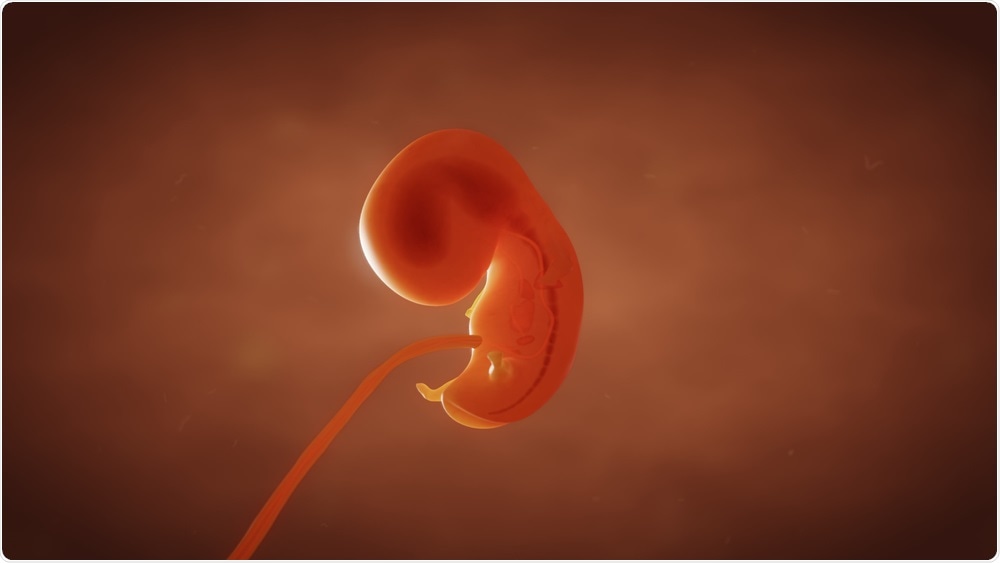A research group led by Massachusetts General Hospital (MGH) has developed premature cells that promote early heart development but disappear soon after birth.

Human Embryo. Image Credit: ap4iwka/Shutterstock.com
The researchers expect that the breakthrough will help achieve their aim of using patients’ cells to create working heart tissue that could be transplanted, similar to donor organs, to treat heart failure. The advance has been explained in the Nature Communications journal.
Named pre-epicardial cells, the cells form the epicardium, a membrane covering the outer surface of the heart. This membrane synthesizes a wide range of cells required to promote heart development before birth.
Harald Ott, MD, a thoracic surgeon at MGH and an associate professor in surgery at Harvard Medical School, and his collaborators formulated a recipe to develop pre-epicardial cells from human-induced pluripotent stem cells—embryo-like cells extracted from reprogrammed mature cells, for example, the skin cells of a patient.
When the pre-epicardial cells are placed in contact with heart muscle cells (or cardiomyocytes), they develop further to turn into epicardial cells and assumed their crucial role of supporting embryonic heart formation—for instance, by improving the maturation of nearby cardiomyocytes.
Ott explains that researchers can retrace the early stages of heart development and produce millions of cardiomyocytes using a single blood draw; however, it is highly complex to form the structure of the heart.
It has been difficult to retrace later stages of tissue development due to the many cell types involved and the complexity of the three-dimensional environment of the developing heart. Our study introduces a cell type that is much closer to later stages of human cardiac development than what we have been able to generate so far.”
Harald Ott, Thoracic Surgeon, Massachusetts General Hospital
The ability to generate cells that have vital roles in forming the structure of the heart is crucial for regenerative medicine approaches for heart disease.
While there are many more steps still required to complete the puzzle of heart development, this work adds an important piece that will hopefully help us and others in recapitulating cardiac development to generate novel therapies for heart failure.”
Harald Ott, Thoracic Surgeon, Massachusetts General Hospital
He predicts that such cell- or tissue-based therapies will offer “on-demand” treatments to replace or restore lost organ function in patients with chronic organ failure, for example, heart failure, kidney disease, and end-stage lung disease.
Source:
Journal reference:
Tan, J. J., et al. (2021) Human iPS-derived pre-epicardial cells direct cardiomyocyte aggregation expansion and organization in vitro. Nature Communications. doi.org/10.1038/s41467-021-24921-z.